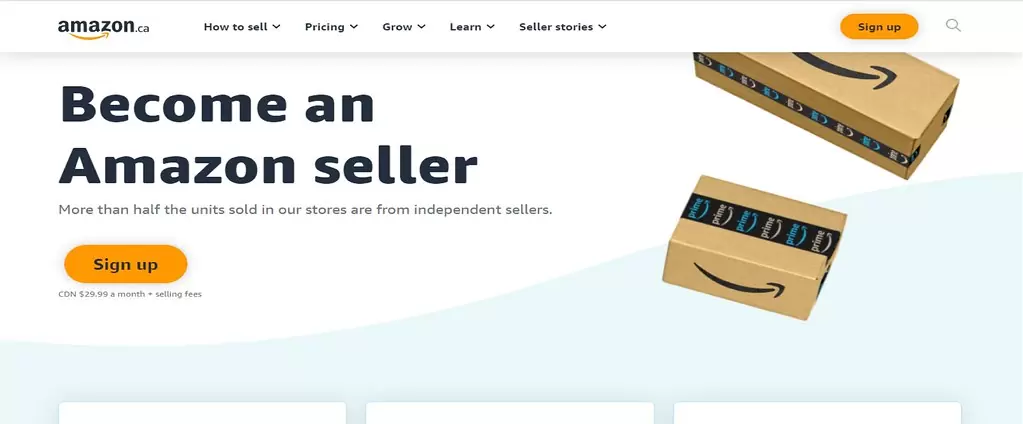Comparing Amazon Vendor Central with Seller Central: Exploring the Hybrid Model
Introduction
In the world of e-commerce, Amazon has established itself as a dominant force, providing opportunities for businesses to reach a vast customer base.
Two primary selling models on Amazon are Vendor Central and Seller Central. In this article, we will compare these two models and discuss the hybrid approach, where sellers strategically utilize both types of accounts.
Amazon Vendor Central: A Wholesale Relationship
Vendor Central, also known as 1P (first party), involves selling products directly to Amazon. It operates similarly to a wholesale relationship.
When using Vendor Central, Amazon manages various aspects such as inventory, customer service, pricing, and listings on behalf of the vendors. This model offers certain advantages, but it also comes with some considerations.
One of the key benefits of Vendor Central is the ability to handle bulk orders. Vendors can take advantage of Amazon’s massive customer base and its programs like Amazon Fresh or Prime.
These programs can significantly boost sales and increase visibility. Additionally, working with Vendor Central allows businesses to offload administrative tasks and focus more on other aspects of their operations.
However, Amazon Vendor Central also comes with its challenges. Businesses need to navigate the complexities of Amazon’s systems and processes, which can sometimes be time-consuming and demanding.
Furthermore, vendors may experience disruptions in their existing listings when transitioning to Vendor Central. These disruptions can impact sales and require additional effort to resolve.
Seller Central: Control and Direct Contact
Seller Central, on the other hand, is designed for businesses that seek more control over pricing and direct contact with the end consumer.
With Seller Central, sellers manage their own inventory and customer service. Fulfillment can be handled by Amazon’s renowned service, Fulfillment by Amazon (FBA).
This model offers flexibility and freedom to sellers, but it also presents its own set of considerations.
Using Seller Central, businesses can maintain a greater degree of control over their pricing strategies.
They can adjust prices dynamically based on market conditions and their business goals. Moreover, sellers can directly engage with customers, building relationships and brand loyalty. This direct contact can lead to valuable insights and opportunities for growth.
However, managing inventory and customer service requires businesses to invest time and resources. While FBA can handle fulfillment, it comes with associated costs.
Sellers must evaluate these factors carefully to ensure that the benefits outweigh the expenses. Additionally, switching to Seller Central from Vendor Central may impact access to certain programs or services available exclusively to vendors.
The Hybrid Model: Harnessing the Best of Both Worlds
In recent years, an increasing number of sellers have adopted a hybrid approach, combining the use of Seller Central and Vendor Central strategically.
This approach allows businesses to leverage the strengths of both models, depending on their products and specific business goals.
By utilizing the hybrid model, sellers can benefit from the advantages offered by Vendor Central, such as bulk orders and access to programs like Amazon Fresh or Prime.
At the same time, they can maintain control over pricing and customer interactions through Seller Central.
This hybrid strategy provides a level of flexibility that helps businesses adapt to market conditions and optimize their overall performance on the Amazon platform.
Choosing the Right Model: Factors to Consider
When deciding between Vendor Central and Seller Central, businesses need to evaluate various factors based on their distribution setup, pricing control requirements, and growth strategies. Here are some key considerations to keep in mind:
-
Distribution Setup: Assess whether your business operates as a traditional wholesaler or as a retailer.
If you primarily function as a wholesaler, Vendor Central might align better with your distribution setup.
On the other hand, if you have a strong retail presence and wish to retain control over pricing and customer relationships, Seller Central could be the preferred choice. -
Pricing Control: Consider the level of control you desire over your pricing strategies.
Vendor Central may limit pricing control to some extent, while Seller Central empowers sellers to set their own prices based on market conditions and their business objectives.
Analyze your pricing goals and determine which model provides the necessary flexibility. -
Growth Strategy: Evaluate your growth plans and the resources available to your business.
Vendor Central might be more suitable if you aim to scale rapidly with the support of Amazon’s infrastructure.
However, if you have the capacity to handle inventory management and customer service independently, Seller Central offers greater autonomy and potentially higher profit margins.
Conclusion
In conclusion, choosing between Amazon Vendor Central and Seller Central is a decision that should be based on a careful analysis of your business’s unique requirements.
Vendor Central provides benefits such as bulk orders and access to exclusive programs, but it requires more administration and may disrupt existing listings. Seller Central, on the other hand, offers pricing control and direct customer contact but comes with the responsibility of managing inventory and customer service.
An alternative approach is to adopt a hybrid model, strategically utilizing both Seller Central and Vendor Central.
This allows businesses to harness the advantages of each model while mitigating their respective limitations.
By considering factors like distribution setup, pricing control, and growth strategy, sellers can make an informed decision that aligns with their long-term goals.
If you found this guide helpful, we recommend checking out our other comprehensive resources.
We have a Complete Online Arbitrage Guide for Beginners, perfect for those wanting to explore more e-commerce strategies.
Also, our Complete Guide for Beginners on How to Start an Amazon Private Label is a great read for those considering the private label route.
Finally, if you need more insights on the wholesale business, our Complete Guide for Beginners on How to Start an Amazon Wholesale Business offers deeper dives into the topic.
Frequently Asked Questions (FAQs)
Q1. Can I switch between Vendor Central and Seller Central? Yes, it is possible to switch between the two models. However, it is important to carefully evaluate the potential disruptions and administrative workload associated with such a transition. Plan accordingly to minimize any negative impact on your business.
Q2. How can I determine which model is right for my business? To decide between Vendor Central and Seller Central, consider factors such as your distribution setup, pricing control requirements, and growth strategy. Assessing these aspects will help you make an informed choice that suits your business goals.
Q3. Can I use both Vendor Central and Seller Central simultaneously? Absolutely! Many businesses adopt a hybrid approach, utilizing both models strategically. This allows them to benefit from the advantages of each model and optimize their performance on the Amazon platform.
Remember, whether you choose Vendor Central, Seller Central, or a combination of both, it’s crucial to adapt your strategy as your business evolves and to continually analyze and optimize your approach for long-term success.


